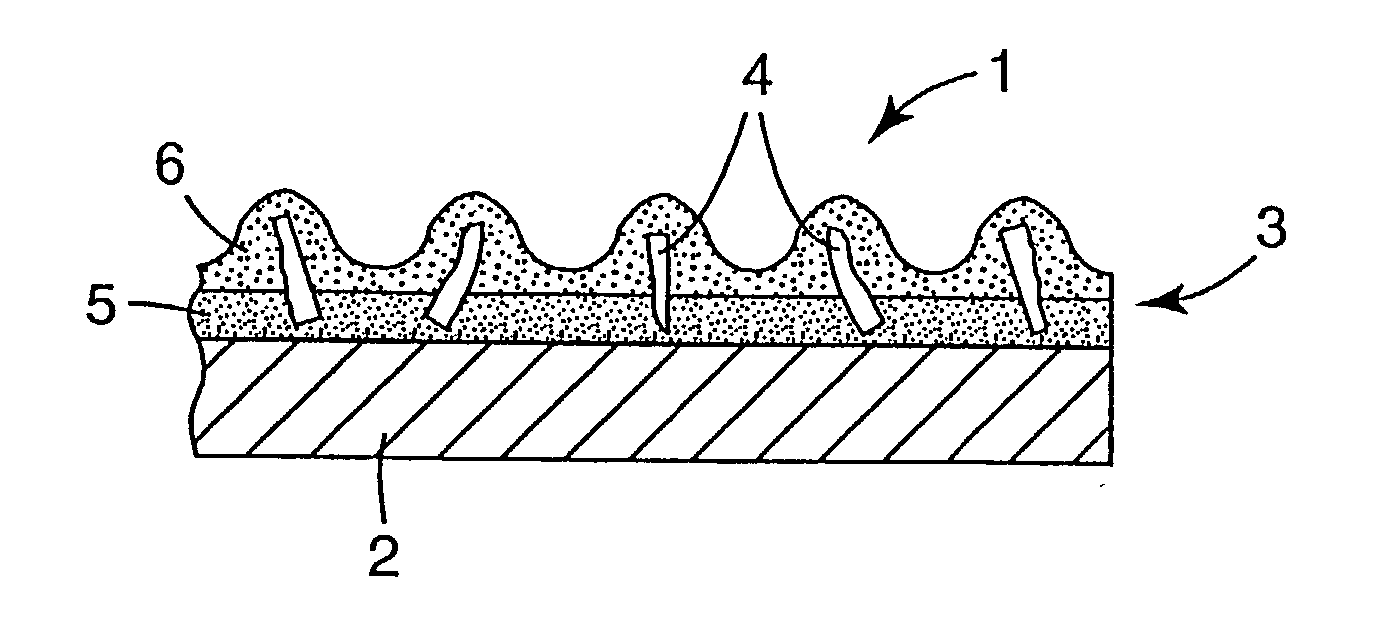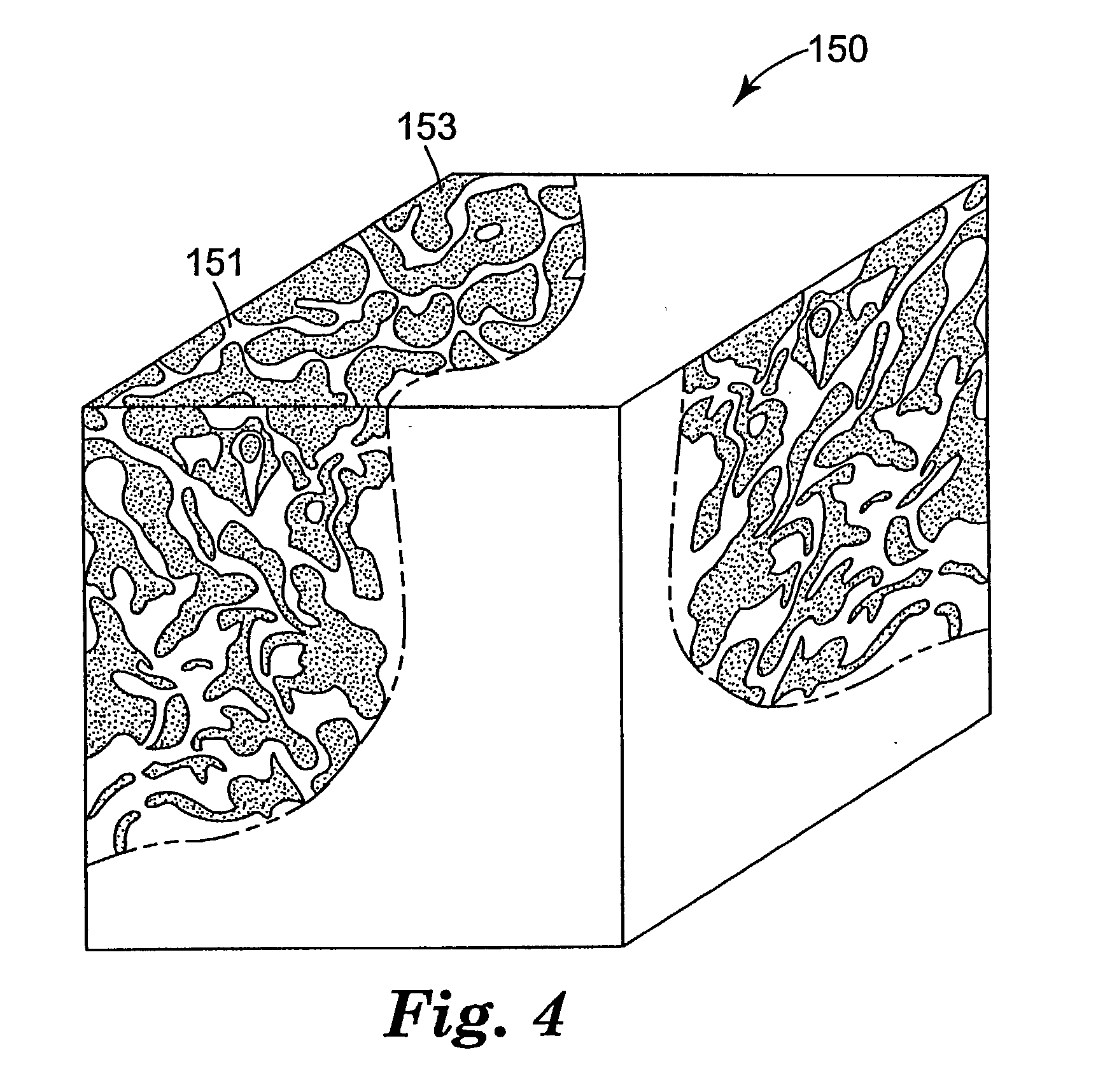Fused abrasive particles, abrasive articles, and methods of making and using the same
a technology of abrasive particles and abrasives, which is applied in the field of fused abrasive particles, abrasive articles, and methods of making and using the same, and can solve the problems of significant decrease in abrading performance of sol-gel-derived abrasive particles, increased number of colonies formed, and complicated process for making sol-gel-derived abrasive particles
- Summary
- Abstract
- Description
- Claims
- Application Information
AI Technical Summary
Benefits of technology
Problems solved by technology
Method used
Image
Examples
example 1
Grinding Performance of Example 1 and Comparative Examples A-C
[0179] The grinding performance of Example 1 and Comparative Examples A-C coated abrasive discs were evaluated as follows. Each coated abrasive disc was mounted on a beveled aluminum back-up pad, and used to grind the face of a pre-weighed 1.25 cm.times.18 cm.times.10 cm 1018 mild steel workpiece. The disc was driven at 5,000 rpm while the portion of the disc overlaying the beveled edge of the back-up pad contacted the workpiece at a load of 8.6 kilograms. Each disc was used to grind individual workpiece in sequence for one-minute intervals. The total cut was the sum of the amount of material removed from the workpieces throughout the test period. The total cut by each sample after 12 minutes of grinding as well as the cut at 12th minute (i.e., the final cut) are reported in Table 1, below.
1TABLE 1 Example Total cut, g Final cut, g Comp. A 418 23 Comp. B 621 48 Comp. C 859 75 1 732 56
example 2
[0180] Example 2 fused material and abrasive particles were prepared as described in Example 1, except (a) the polyethylene bottle was charged with 173 grams of alumina powder ("APA-0.5"), 19.3 grams of magnesium oxide powder (obtained under the trade designation "MAGCHEM 10-325" from Martin Marietta Magnesia Specialties, Hunt Valley, Md.), 107.8 grams of yttrium oxide powder obtained from H. C. Starck, Newton, Mass.), 0.6 gram of a dispersing agent ("DURAMAX D-30005"), and 137.4 grams of distilled water, and (b) the powders were present in amounts to provide 64 mole % Al.sub.2O.sub.3, 18 mole % MgO, and 18 mole % Y.sub.2O.sub.3. The fused material was white in color.
[0181] FIG. 9 is a scanning electron microscope (SEM) photomicrograph of a polished section (prepared as described in Example 1) of fused Example 2 material. The photomicrograph shows a eutectic-derived microstructure comprising a plurality of colonies. The colonies are about 10-40 micrometers in size. Based on powder x...
example 3
Grinding Performance of Example 3 and Comparative Examples A-C
[0195] The grinding performance of Example 3 and Comparative Examples A-C coated abrasive discs were evaluated as described above for Example 1 and Comparative Examples A-C. The results are reported in Table 2, below.
2TABLE 2 Example Total cut, g Final cut, g Comp. A 424 24 Comp. B 614 45 Comp. C 940 79 3 711 58
PUM
| Property | Measurement | Unit |
|---|---|---|
| temperatures | aaaaa | aaaaa |
| size | aaaaa | aaaaa |
| size | aaaaa | aaaaa |
Abstract
Description
Claims
Application Information
 Login to View More
Login to View More - R&D
- Intellectual Property
- Life Sciences
- Materials
- Tech Scout
- Unparalleled Data Quality
- Higher Quality Content
- 60% Fewer Hallucinations
Browse by: Latest US Patents, China's latest patents, Technical Efficacy Thesaurus, Application Domain, Technology Topic, Popular Technical Reports.
© 2025 PatSnap. All rights reserved.Legal|Privacy policy|Modern Slavery Act Transparency Statement|Sitemap|About US| Contact US: help@patsnap.com



